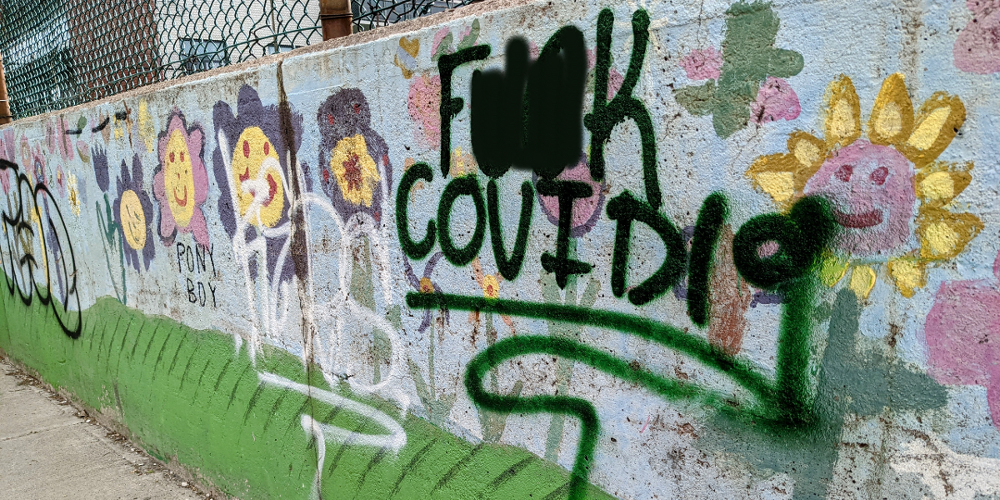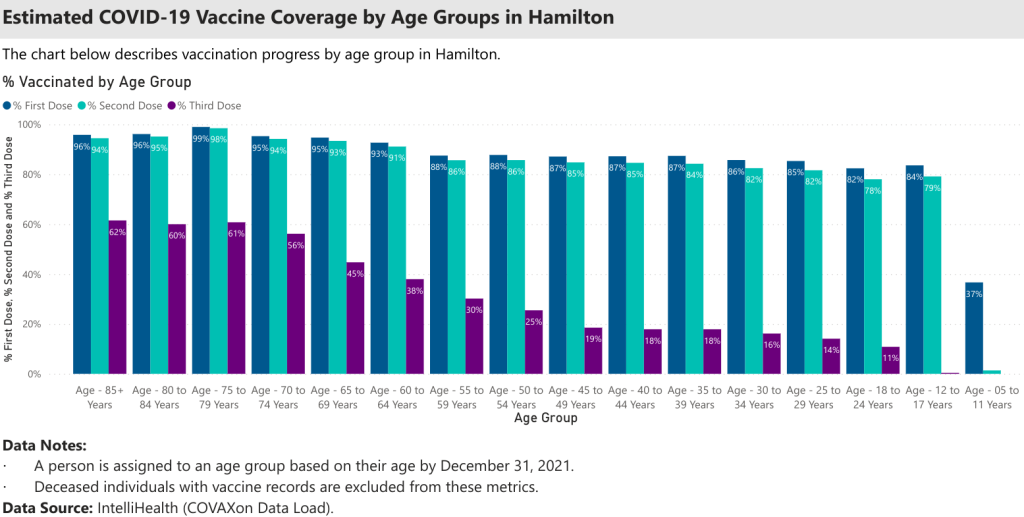Juravinski Hospital at 110% capacity as total Hamilton COVID-19 cases nears 5,000
Published December 31, 2021 at 2:24 pm

Hamilton added 818 new COVID-19 cases on Friday (Dec. 31), bringing the total number of active cases to 4,791.
Hamilton Health Services (HHS)
16 additional people were admitted to Hamilton Health Services (HHS) hospitals to be treated for COVID-19 within the last 24 hours and none were admitted to the intensive care unit (ICU). HHS is reporting that there are 97 patients being treated for COVID-19 at their hospitals with 13 in the ICU.
Hamilton General Hospital is at 98 per cent occupancy. Juravinski Hospital is at 110 per cent.
HHS is reporting that 411 staff are self-isolating, compared to 354 on Wednesday.
97. 9 per cent of HHS employees are fully vaccinated and 13 individuals have had their employment terminated for not following vaccination guidelines.
St. Joseph’s Healthcare Hamilton
The most recent data from St. Joseph’s Healthcare Hamilton is from Wednesday (Dec. 29). There are 57 patients being treated for COVID-19 with six being in the ICU.
St. Joe’s hospital occupancy was at 86 per cent. ICU occupancy was 70 per cent.
143 St. Joe’s employees are self-isolating.
97.9 per cent of the staff at St. Joe’s is fully vaccinated while four individuals are currently on unpaid leave for violating vaccination guidelines.
City of Hamilton vaccination numbers
79.4 per cent of eligible Hamiltonians are fully vaccinated as of Friday with 84.5 per cent receiving at least one dose. 37 per cent of children between the ages of four and 12 are fully vaccinated. The vaccination percentage of the other age groups ranges between 84 and 99 per cent.

Unvaccinated Hamilton residents are being infected at a rate 2.5 times higher than the vaccinated, according to City data collected from Aug. 18, 2021, to now. The unvaccinated have also been 15.6 times more likely to be hospitalized and 30.5 times more likely to be admitted to the ICU. The risk of death among the unvaccinated is 8.1 times higher than it is for the fully vaccinated in Hamilton.

Provincial COVID-19 numbers
Several provinces reported record COVID-19 cases yet again on New Year’s Eve as they scrambled to adjust their public health strategies to account for the Omicron-driven surge in diagnoses.
Ontario and Quebec both faced more than 16,000 new diagnoses for the first time, while New Brunswick reported a record 682 cases as it changed its criteria for testing and cancelled non-urgent medical procedures.
“The Omicron variant is already worsening existing staffing shortages in the health system. We expect the situation will become even more challenging as we live through this latest wave of COVID-19,” New Brunswick Health Minister Dorothy Shephard told a news conference Friday.
During the same press conference, Premier Blaine Higgs announced he had tested positive for the COVID-19 using a rapid test and was waiting for confirmation via a more accurate PCR test. He said he was experiencing only mild symptoms.
Due to the influx of cases, New Brunswick announced it will limit access to its PCR tests starting Jan. 4 to only those considered at highest risk of the virus, including people who live in congregate care settings and members of the general public who are 50 or older — Higgs included.
New Brunswick is also pushing back the resumption of in-person learning by 11 days and shortening isolation requirements for people who test positive for COVID-19, to five days for those who are vaccinated and 10 for those who aren’t.
Alberta Health Minister Jason Copping announced his province was also shortening the isolation period to five days for people with at least two doses of vaccine who test positive for the virus. He said patients’ symptoms must be fully resolved by the end of the five-day period, otherwise, they must continue to isolate.
Meanwhile, Quebec’s curfew and ban on private gatherings came back into effect Friday, just in time to prohibit parties on New Year’s Eve.
“It’s an extreme action to take because the situation is extreme,” Quebec Premier Francois Legault said in announcing the 10 p.m. to 5 a.m. curfew Thursday.
He said that when the rate of transmission in the province is under control, the curfew will be the first health order the government removes.
Both Ontario and Quebec said they had more than 1,000 COVID-19 patients in hospital. The former had upwards of 200 in intensive care units with the virus, while the latter reported 151.
—with files from The Canadian Press
insauga's Editorial Standards and Policies advertising





